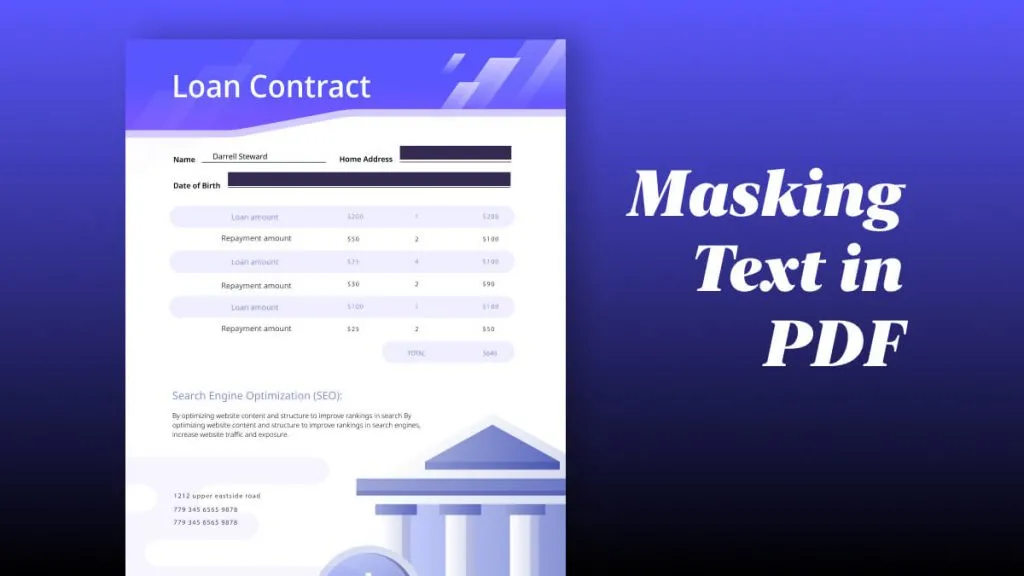Keeping sensitive information safe when sharing PDF files is very necessary these days. Without proper protection, these files can be accessed by unauthorized people. This eventually puts your data and reputation at risk. To avoid such potential problems, it is essential to password-protect PDFs on Windows. There is no need to worry if you are unclear about how to password-protect your PDF files.
With no need for any technical expertise, this guide will show you how to secure your data quickly and easily. By following these steps, you can ensure your PDFs remain safe and accessible only to the desired audience.
Part 1. The Best Way to Password Protect PDF on Windows 10/11
Protecting your PDF files on Windows 10/11 is now easier than ever with the help of UPDF. This tool offers a straightforward and effective way to add a password to PDF Windows 10/11. However, this guarantees the security of your information. Using UPDF, you have the option to add two types of passwords to your PDF documents one is the Open Password, and the other is Permission Password.
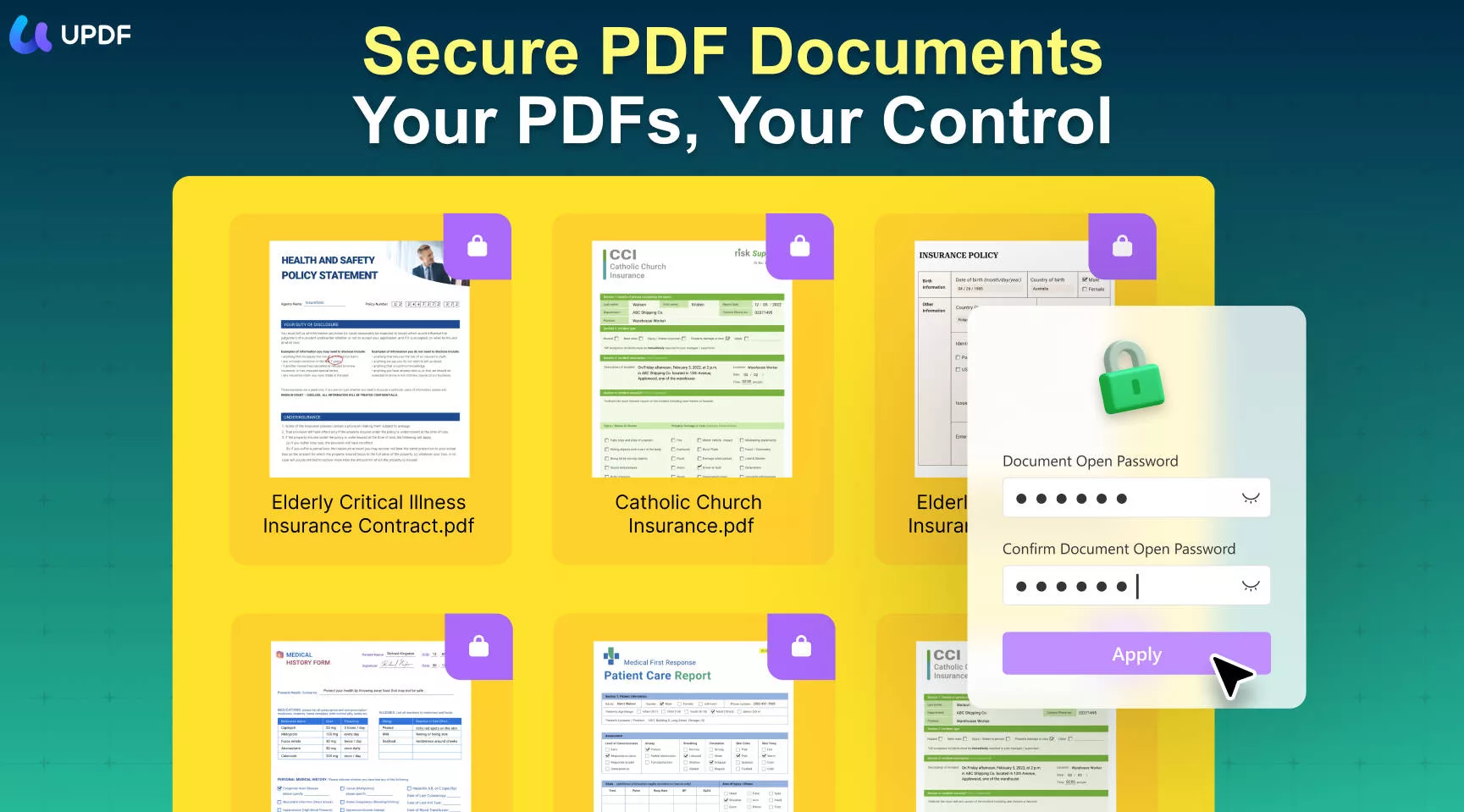
In addition, UPDF comes with a range of additional features that enhance your PDF management experience. You can save PDFs as flattened files, preventing altering the document's content. Another impressive aspect of UPDF is its integration of AI technology through UPDF AI. This advanced feature enables powerful functionalities.
Such as summarizing, explaining, and translating text within your PDFs makes information processing even more efficient. Learn more about the two kinds of passwords and how to add them as you continue reading.
Way 1. Encrypt PDF on Windows Via Open Password
The open password restricts PDF access, ensuring only authorized users can view its contents. This type of password protection is useful when you must stop people from accessing files without permission. Try the provided steps and encrypt the PDF file on Windows 10/11:
Step 1: Open the PDF File in UPDF
Download UPDF via the below button and install the latest version of UPDF on your Windows 10/11 PC and add the file using the “Open File” option. Next, choose the narrow next to save and select “Protect Using Password” tool from the right-side toolbar and click on the “Document Open Password” feature.
Windows • macOS • iOS • Android 100% secure
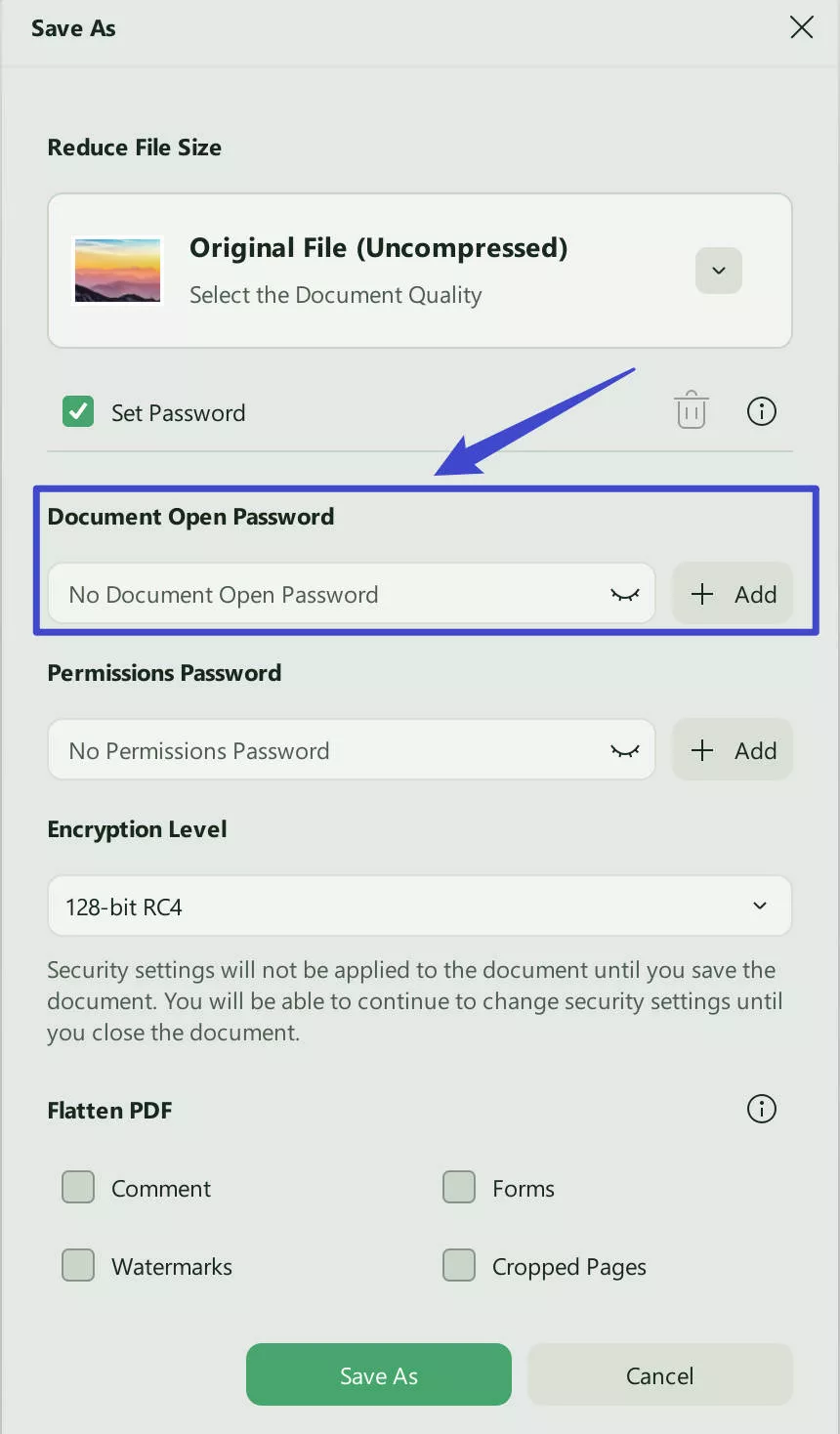
Step 2: Customize the Open Password Settings
Enter the password you want to set as an open password and confirm it as well by entering it twice. Afterward, press the “Save” button and save the document on the system with the open password feature.
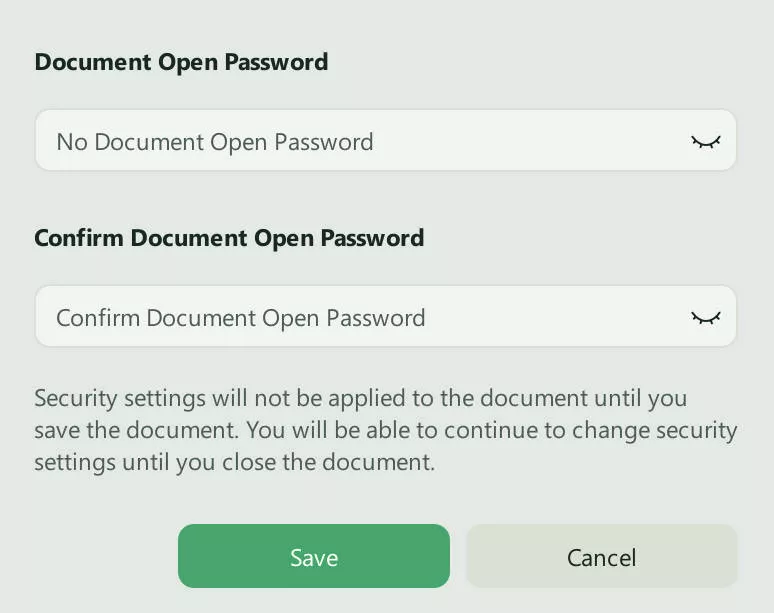
Way 2. Encrypt PDF File on Windows 10/11 Via Permission Password
On the other hand, the permission passwords limit editing, copying, and printing capabilities, adding an extra layer of security to your files. Users can access the file and read its contents with this kind of password, but they become unable to do any editing. Continue reading to learn about how to encrypt PDF on Windows with the given steps:
Instructions: Customize the Permission Password Settings
Access the “Permissions Password” option from the “Protect Using Password” tool options and type the password you want to set in both boxes. Customize the permissions by clicking the “More Options” option. Once done with all the settings, click the “Save” button and save the permission password-protected document.
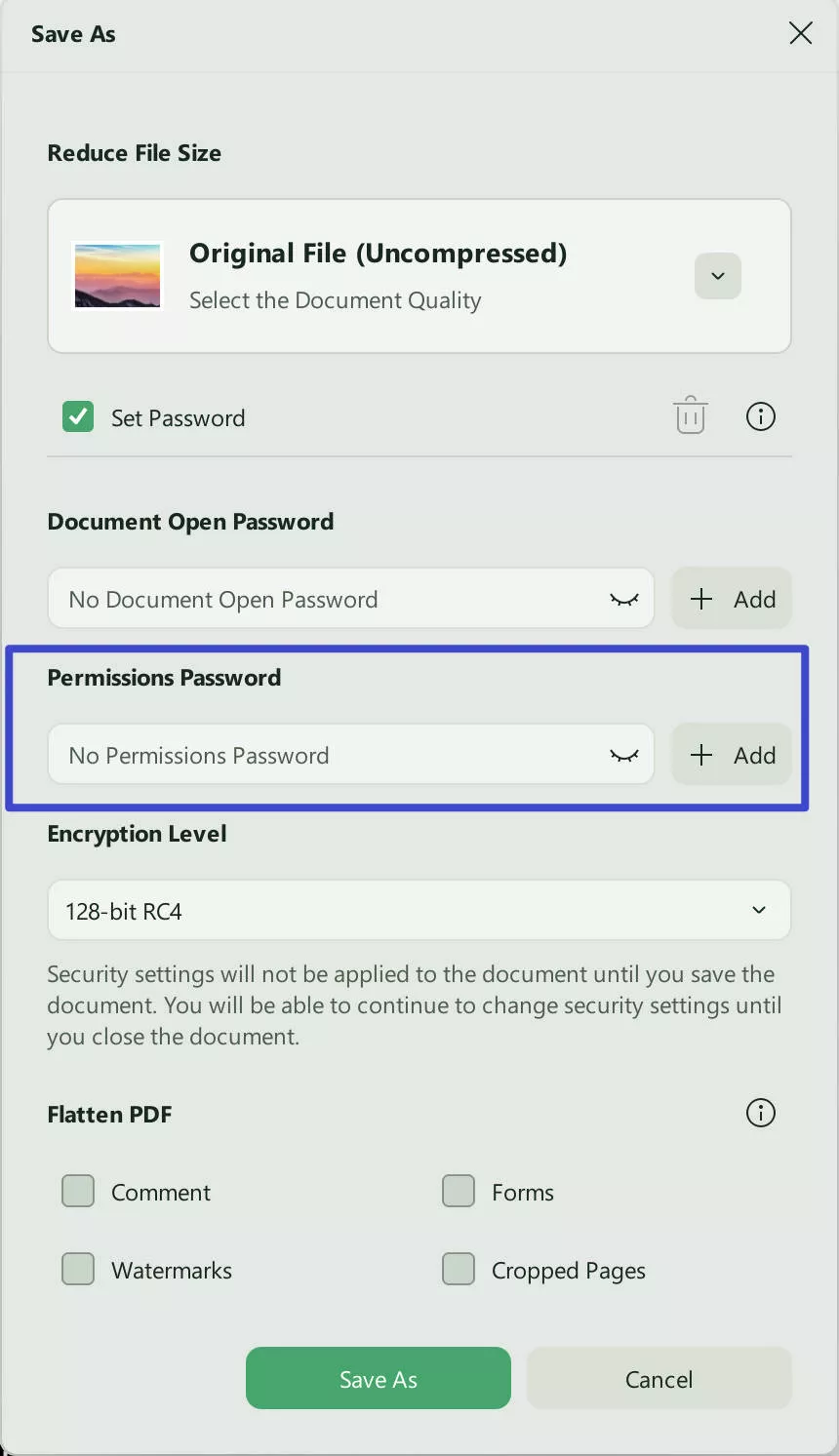
Watch the guide video below to learn how to protect PDF from data Leak.
Part 2. Password Protect PDF in Microsoft Edge
You may view websites and browse the internet using the Microsoft Edge web browser. Although Microsoft Edge doesn't offer a built-in method for password-protecting your PDF files, you may still add an additional layer of security by utilizing an extension. This extension works accurately and helps password-protect PDFs in Microsoft Edge.
With the password in place, only people who know the password can open and make changes to the PDF. The extension you can use for this purpose is Alto Protect PDF. On your device or browser, it simply takes up a small amount of space and is simple to use. By adding a strong password to your PDF files using this extension, you can be sure that your sensitive data is kept private and secure.
So, if you want to keep your PDF files safe in Microsoft Edge, use the Alto Protect PDF extension to password-protect PDFs by following these steps:
Step 1: Open Microsoft Edge on your Windows PC and access the "Extensions" option from the "Three Dots" menu in the top right corner. From the expanded menu that appears on the screen, click on the "Open Microsoft Edge Add-ons" option to install the Alto Protect PDF extension.
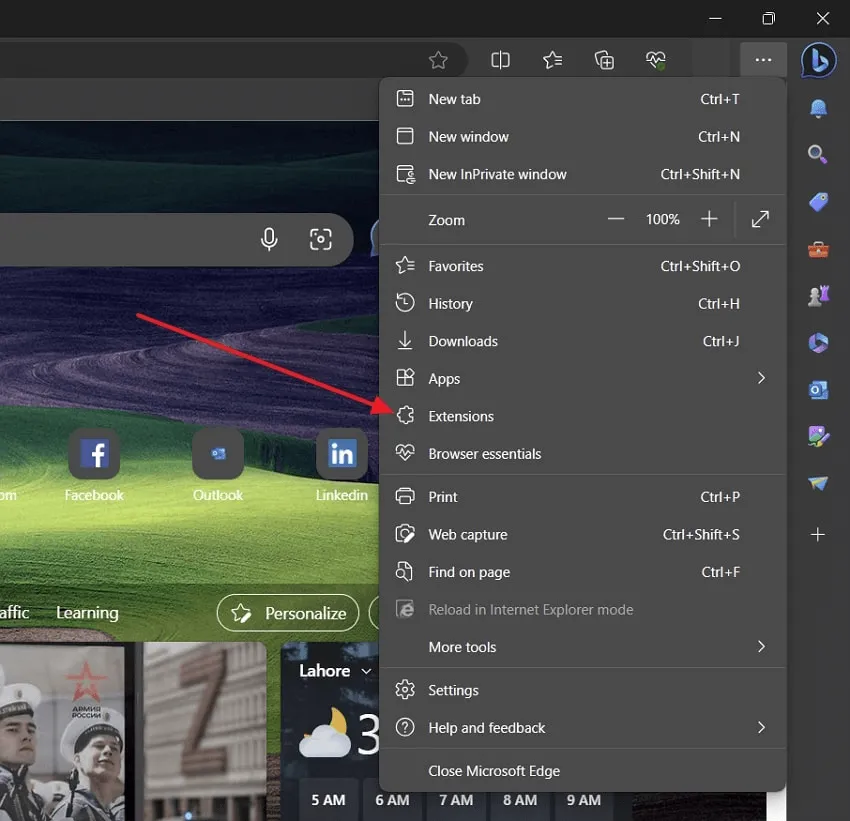
Step 2: Afterward, search for the “Alto Protect PDF Files” extension and proceed into its details. Tap on the “Get” button and install the extension file. Microsoft Edge will ask you whether you want to add the extension or not; tap the “Add Extension” option to add it successfully.
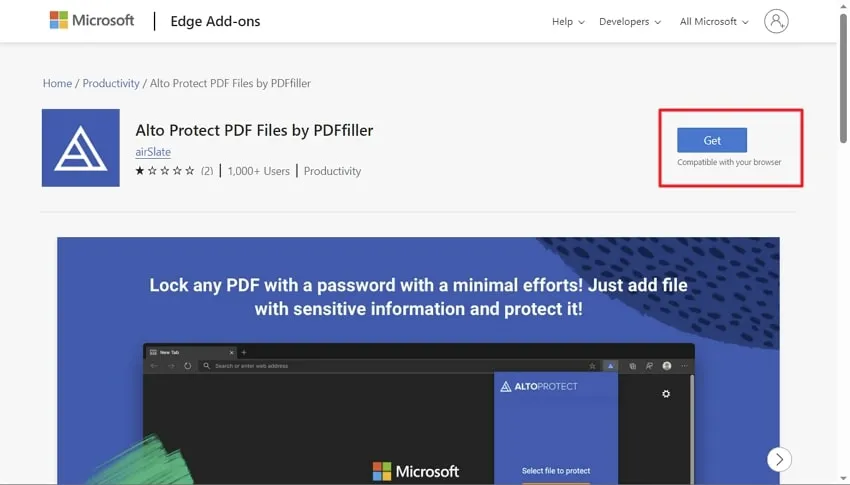
Step 3: Access the Alto Protect PDF extension from the Edge toolbar and press the “Choose File” button to import the desired document. Once the document is loaded, type the password you want to set for the file and press the “Protect File Now” to complete the procedure.
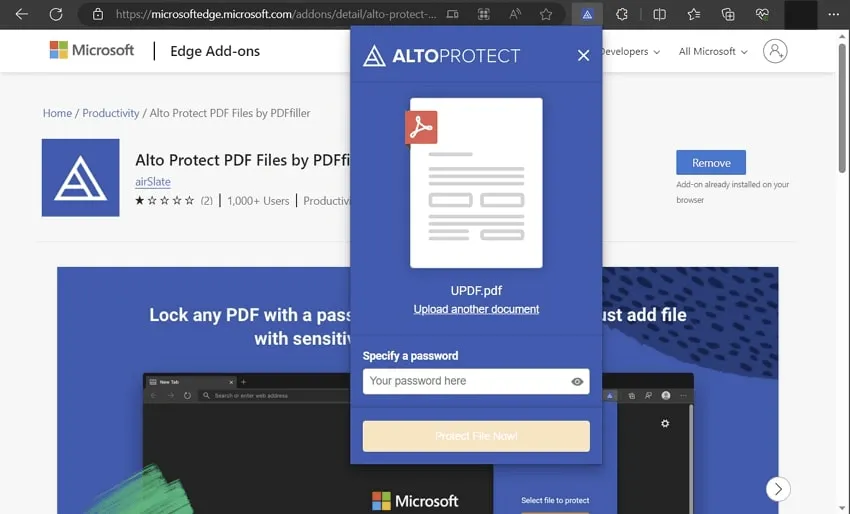
Part 3. Password Protect a PDF File in Windows 10/11 Via Adobe Acrobat
Easily safeguard and password-protect a PDF file in Windows 10/11 using Adobe Acrobat, one of the world's leading PDF editors with millions of users. With Adobe Acrobat, you can effortlessly add a password to your PDFs for enhanced security. In addition to making the password protection process quick and easy, it also provides a number of other helpful functions.
These include PDF editing, image insertion, and text highlighting. Therefore, Adobe Acrobat is the best choice if you're looking for a trustworthy program to handle and safeguard your PDF files. For a better understanding of using this tool, detailed steps are provided below:
Step 1: On Adobe Acrobat, tap the “Menu” tab and choose the “Open” option to import the confidential document. Next, choose the “Protect a PDF” tool from the left side and select the “Encrypt with Password” feature to proceed with the protecting sensitive data process.
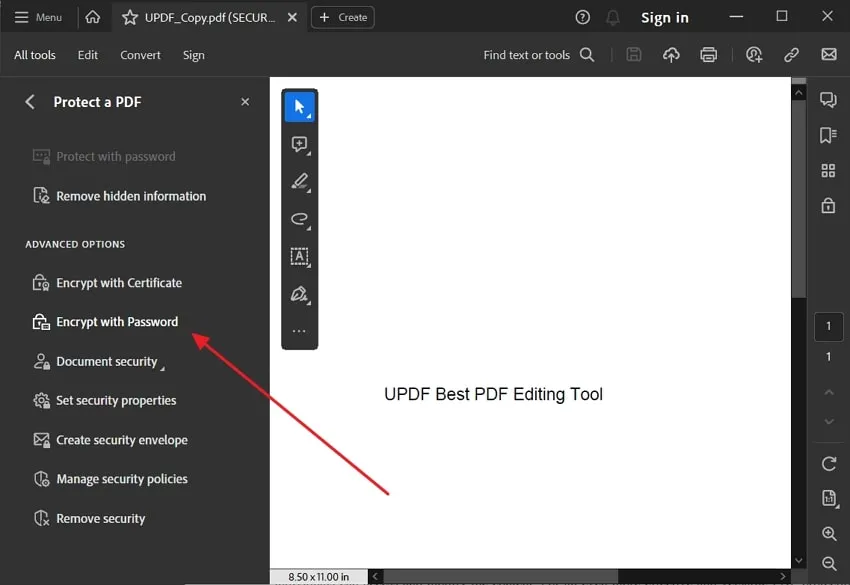
Step 2: Following this, choose the password type according to your requirement and enable the option against it. Customize the settings for that password type and other options available by Adobe Acrobat. To save the PDF with the specified password type, press the “OK” button and save the document using the “Ctrl + S” shortcut.
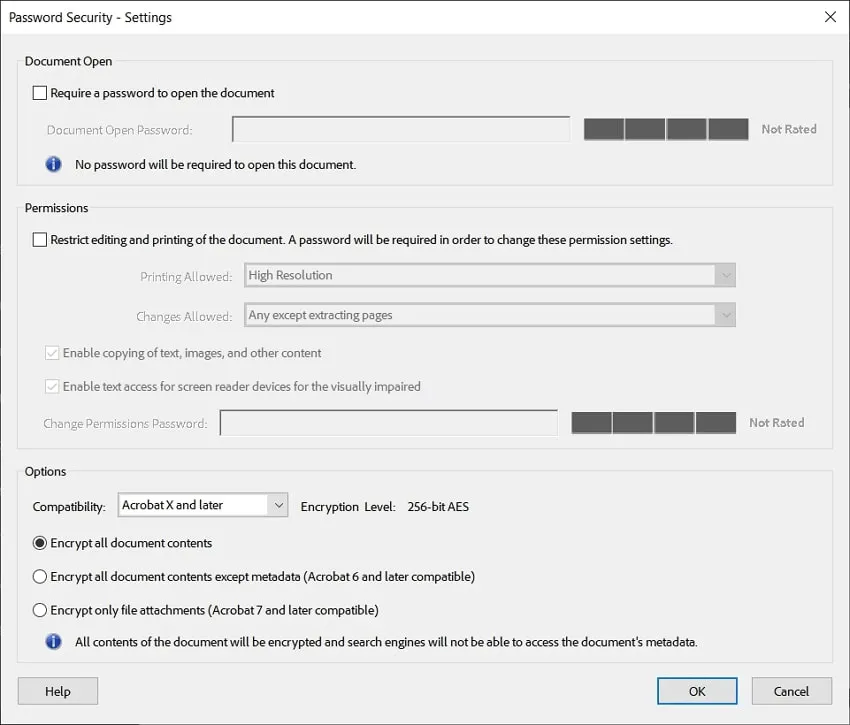
Final Words
In summary, by following this easy guide regarding password-protect PDFs on Windows, you can keep your important PDF files safe and secure. Password-protecting your PDFs ensures that only authorized individuals can access and modify the content. For an even more effective and versatile PDF protection solution, consider using UPDF.
This tool allows you to set two types of passwords, an open password for limiting access and a permissions password for controlling editing. This way, you can customize the level of security according to your specific needs.
Just download UPDF and see if it is what you need.
Windows • macOS • iOS • Android 100% secure
 UPDF
UPDF
 UPDF for Windows
UPDF for Windows UPDF for Mac
UPDF for Mac UPDF for iPhone/iPad
UPDF for iPhone/iPad UPDF for Android
UPDF for Android UPDF AI Online
UPDF AI Online UPDF Sign
UPDF Sign Edit PDF
Edit PDF Annotate PDF
Annotate PDF Create PDF
Create PDF PDF Form
PDF Form Edit links
Edit links Convert PDF
Convert PDF OCR
OCR PDF to Word
PDF to Word PDF to Image
PDF to Image PDF to Excel
PDF to Excel Organize PDF
Organize PDF Merge PDF
Merge PDF Split PDF
Split PDF Crop PDF
Crop PDF Rotate PDF
Rotate PDF Protect PDF
Protect PDF Sign PDF
Sign PDF Redact PDF
Redact PDF Sanitize PDF
Sanitize PDF Remove Security
Remove Security Read PDF
Read PDF UPDF Cloud
UPDF Cloud Compress PDF
Compress PDF Print PDF
Print PDF Batch Process
Batch Process About UPDF AI
About UPDF AI UPDF AI Solutions
UPDF AI Solutions AI User Guide
AI User Guide FAQ about UPDF AI
FAQ about UPDF AI Summarize PDF
Summarize PDF Translate PDF
Translate PDF Chat with PDF
Chat with PDF Chat with AI
Chat with AI Chat with image
Chat with image PDF to Mind Map
PDF to Mind Map Explain PDF
Explain PDF Scholar Research
Scholar Research Paper Search
Paper Search AI Proofreader
AI Proofreader AI Writer
AI Writer AI Homework Helper
AI Homework Helper AI Quiz Generator
AI Quiz Generator AI Math Solver
AI Math Solver PDF to Word
PDF to Word PDF to Excel
PDF to Excel PDF to PowerPoint
PDF to PowerPoint User Guide
User Guide UPDF Tricks
UPDF Tricks FAQs
FAQs UPDF Reviews
UPDF Reviews Download Center
Download Center Blog
Blog Newsroom
Newsroom Tech Spec
Tech Spec Updates
Updates UPDF vs. Adobe Acrobat
UPDF vs. Adobe Acrobat UPDF vs. Foxit
UPDF vs. Foxit UPDF vs. PDF Expert
UPDF vs. PDF Expert

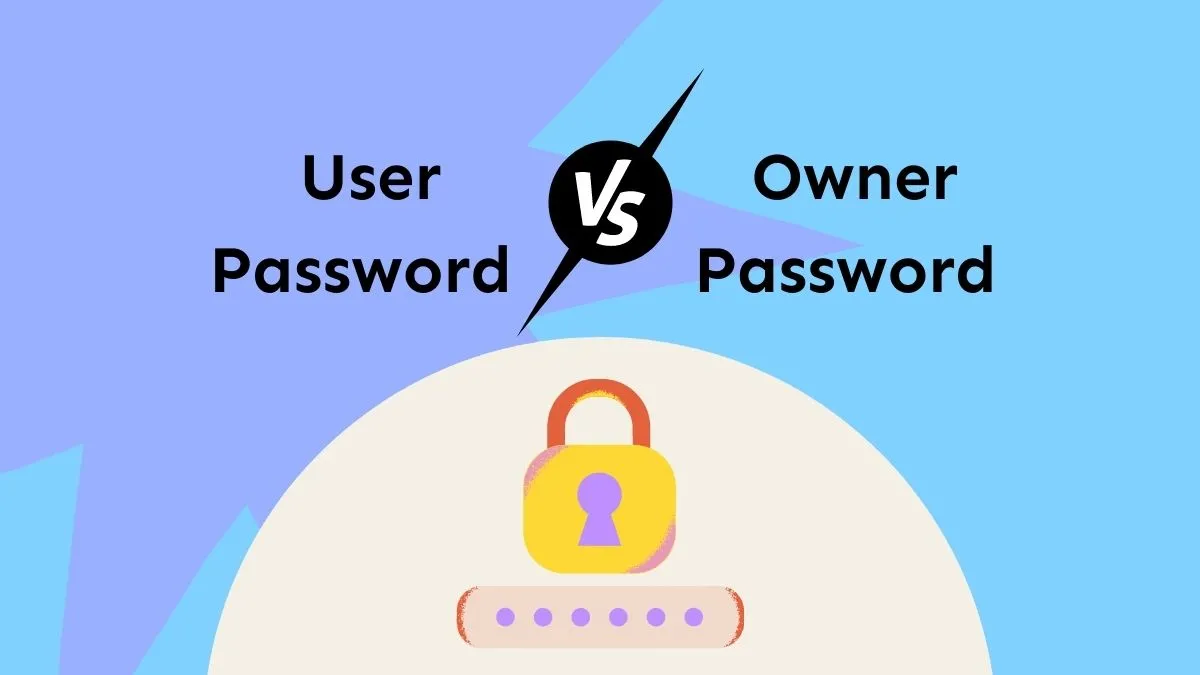



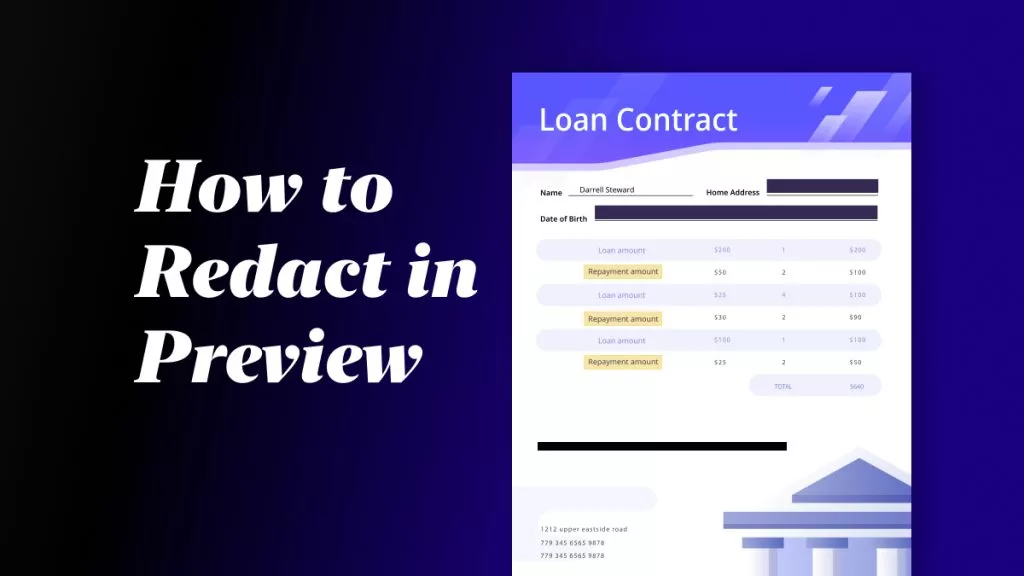
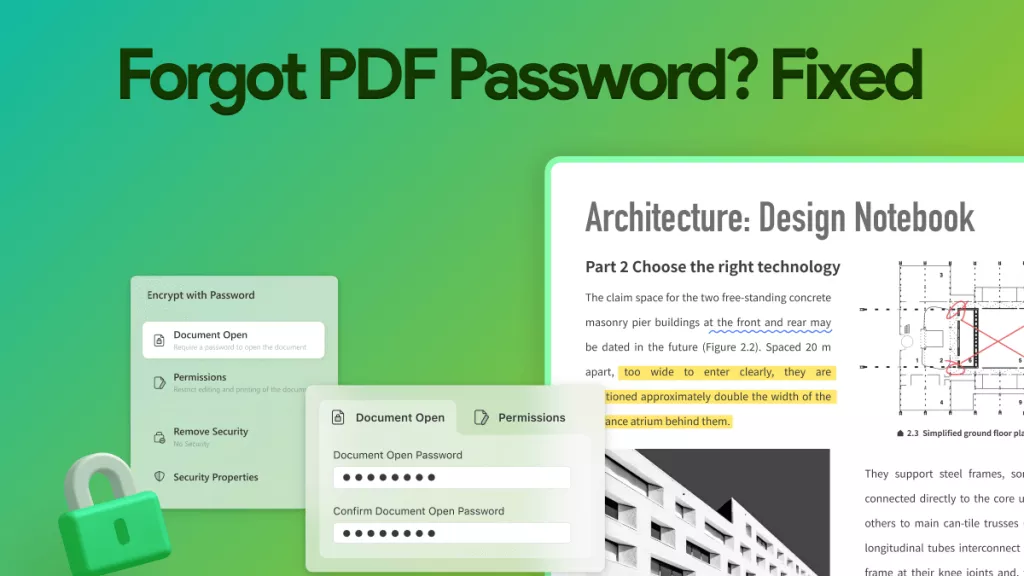
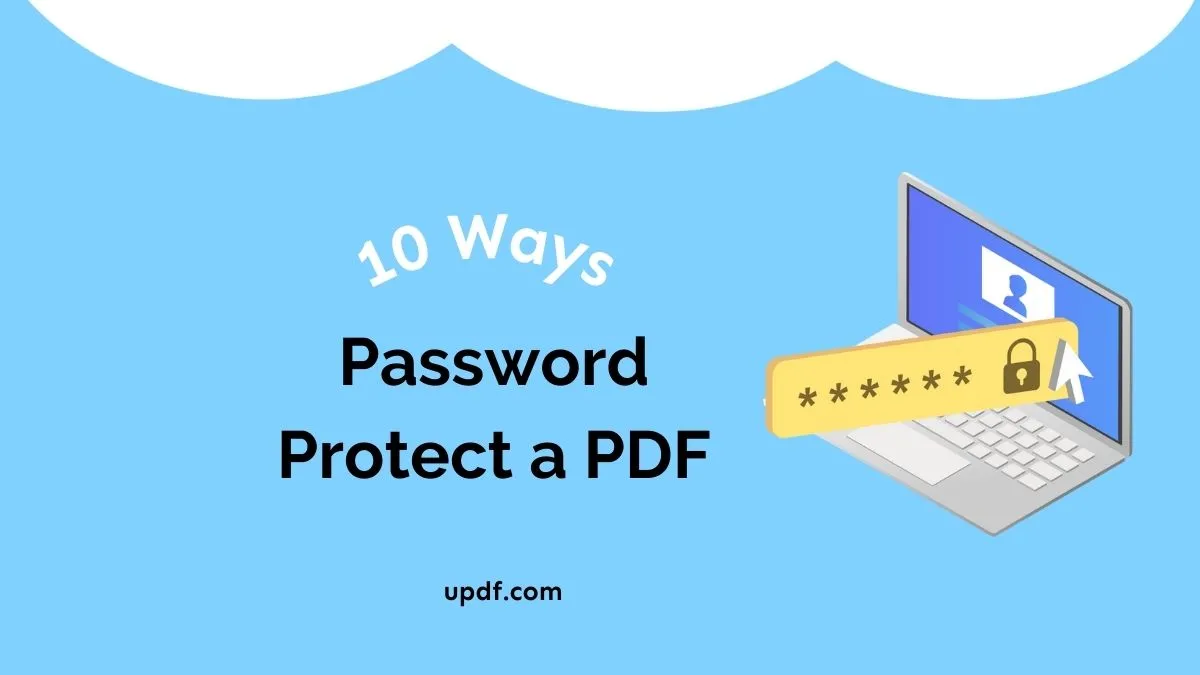
 Enrica Taylor
Enrica Taylor 

 Delia Meyer
Delia Meyer 
 Enid Brown
Enid Brown 